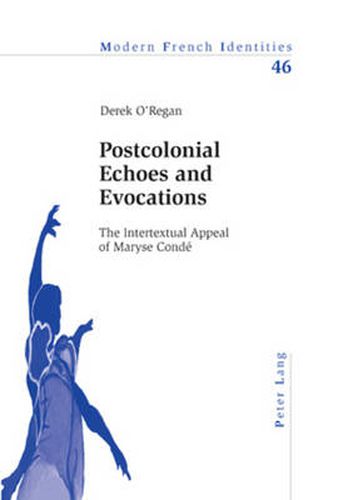Readings Newsletter
Become a Readings Member to make your shopping experience even easier.
Sign in or sign up for free!
You’re not far away from qualifying for FREE standard shipping within Australia
You’ve qualified for FREE standard shipping within Australia
The cart is loading…






This work is a sedulous enquiry into the intertextual practice of Maryse Conde in Moi, Tituba, sorciere… noire de Salem (1986), Traversee de la mangrove (1989) and La Migration des coeurs (1995), the texts of her oeuvre in which the practice is the most elaborate and discursively significant. Arguing that no satisfactory reading of these novels is possible without due intertextual reference and interpretation, the author analyses salient intertexts which flesh out and, in the case of Traversee de la mangrove, shed considerable new light on meaning and authorial discourse. Whether it be in respect of canonical (William Faulkner, Emily Bronte, Nathaniel Hawthorne), postcolonial (Aime Cesaire, Jacques Roumain) or other (Anne Hebert, Saint-John Perse) writers, the author explores Conde’s intertextual choices not only around such themes as identity, resistance, metissage and errance, but also through the dialectics of race-culture, male-female, centre-periphery, and past-present. As both textual symbol and enactment of an increasingly creolised world, intertextuality constitutes a pervasively powerful force in Conde’s writing the elucidation of which is indispensable to evaluating the significance of this unique fictional oeuvre.
$9.00 standard shipping within Australia
FREE standard shipping within Australia for orders over $100.00
Express & International shipping calculated at checkout
This work is a sedulous enquiry into the intertextual practice of Maryse Conde in Moi, Tituba, sorciere… noire de Salem (1986), Traversee de la mangrove (1989) and La Migration des coeurs (1995), the texts of her oeuvre in which the practice is the most elaborate and discursively significant. Arguing that no satisfactory reading of these novels is possible without due intertextual reference and interpretation, the author analyses salient intertexts which flesh out and, in the case of Traversee de la mangrove, shed considerable new light on meaning and authorial discourse. Whether it be in respect of canonical (William Faulkner, Emily Bronte, Nathaniel Hawthorne), postcolonial (Aime Cesaire, Jacques Roumain) or other (Anne Hebert, Saint-John Perse) writers, the author explores Conde’s intertextual choices not only around such themes as identity, resistance, metissage and errance, but also through the dialectics of race-culture, male-female, centre-periphery, and past-present. As both textual symbol and enactment of an increasingly creolised world, intertextuality constitutes a pervasively powerful force in Conde’s writing the elucidation of which is indispensable to evaluating the significance of this unique fictional oeuvre.